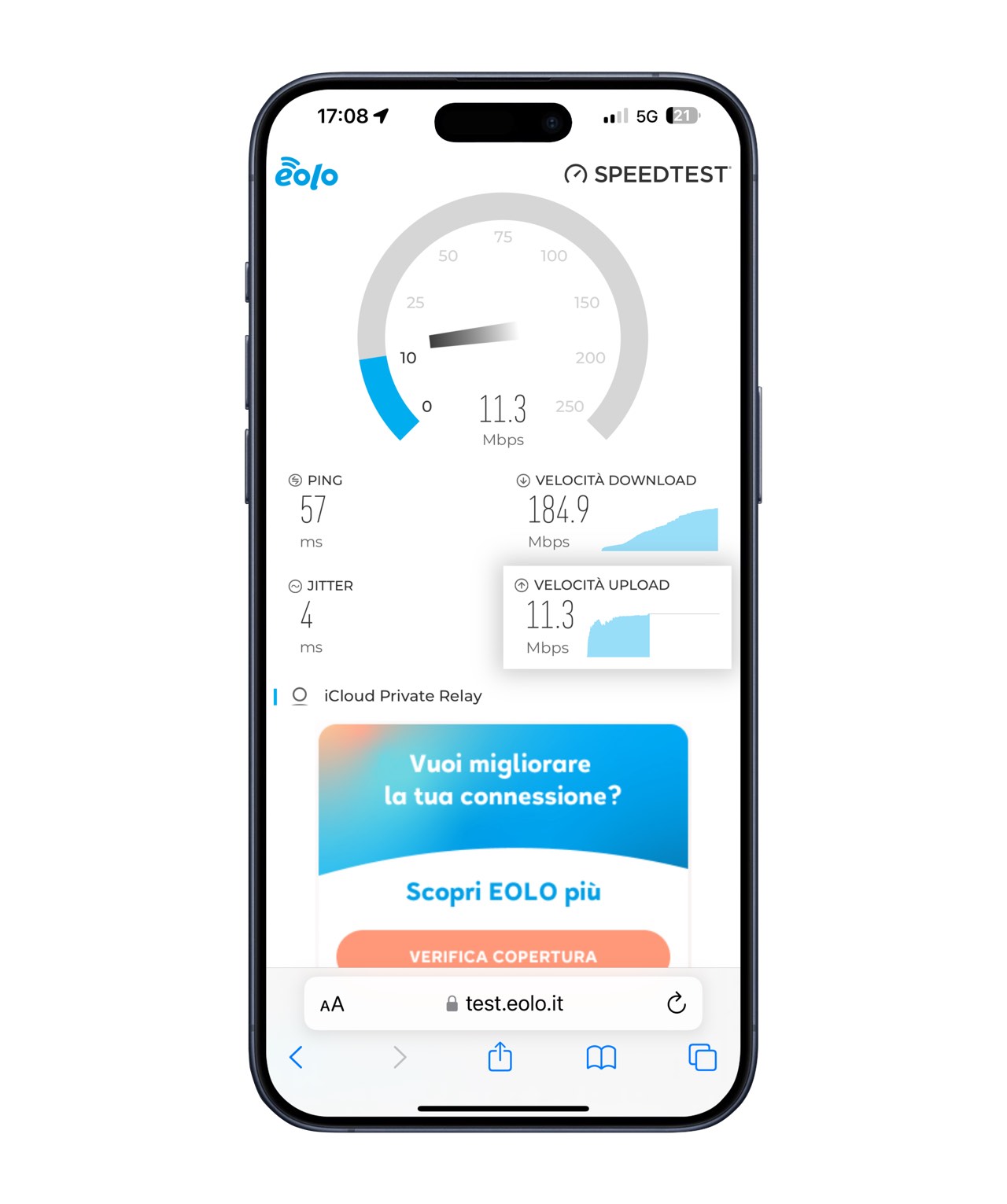Unveiling Your EOLO Connection: The Importance and Nuances of the EOLO Speed Test
In today’s hyper-connected world, a reliable internet connection is no longer a luxury, but a necessity. For many, particularly those in rural or underserved areas, EOLO has become a lifeline, offering fixed wireless access (FWA) as a viable alternative to traditional broadband. However, simply having an EOLO connection isn’t enough; understanding its performance is crucial. This is where the EOLO speed test comes into play, a vital tool for assessing and optimizing your internet experience.
This comprehensive guide delves into the intricacies of the EOLO speed test, exploring its significance, the factors that influence results, how to conduct accurate tests, and how to interpret the data.
Why is the EOLO Speed Test Crucial?

The EOLO speed test provides a snapshot of your internet connection’s current performance, allowing you to:
Verify Contracted Speeds
One of the primary reasons to perform a speed test is to ensure you’re receiving the speeds you’re paying for. EOLO, like other ISPs, offers various plans with different advertised speeds. Regular testing helps you hold them accountable.
Troubleshoot Connectivity Issues

Slow loading times, buffering videos, and lag during online gaming can be frustrating. A speed test can pinpoint whether the problem lies with your internet connection or elsewhere.
Optimize Network Performance
Understanding your connection’s speed and stability allows you to optimize your network for specific activities.
Monitor Service Quality Over Time
Regular speed tests provide a historical record of your connection’s performance, enabling you to track changes and identify potential issues before they escalate.
Understanding the Key Metrics of an EOLO Speed Test
Before conducting a speed test, it’s essential to understand the key metrics involved:
Download Speed
This measures how quickly data is transferred from the internet to your device. It’s crucial for activities like streaming videos, downloading files, and browsing websites.
Upload Speed
This measures how quickly data is transferred from your device to the internet. It’s essential for activities like video conferencing, uploading files, and online gaming.
Latency (Ping)
Latency, also known as ping, measures the time it takes for a data packet to travel from your device to a server and back. It’s crucial for real-time applications like online gaming and video conferencing.
Jitter
Jitter measures the variation in latency over time. High jitter can cause disruptions in real-time applications, leading to choppy audio and video.
Packet Loss
Packet loss occurs when data packets fail to reach their destination. High packet loss can result in incomplete downloads, dropped connections, and poor performance in online games.
Factors Affecting EOLO Speed Test Results
Several factors can influence the results of your EOLO speed test, including:
Network Congestion
During peak hours, network congestion can significantly impact speeds. This is a common issue with all internet services, including FWA.
Distance from the EOLO Tower
Since EOLO relies on fixed wireless technology, the distance between your home and the nearest EOLO tower can affect signal strength and speed.
Obstacles and Interference
Physical obstacles, such as trees, buildings, and hills, can obstruct the signal between your home and the EOLO tower.
Weather Conditions
Heavy rain, snow, and fog can attenuate the wireless signal, leading to reduced speeds and increased latency.
Device and Network Configuration
The performance of your router, Wi-Fi network, and connected devices can significantly impact speed test results.
Server Location
VPN Usage
How to Conduct an Accurate EOLO Speed Test
To ensure accurate and reliable results, follow these steps:
Choose a Reliable Speed Test Tool
Several online speed test tools are available, including those provided by EOLO, Ookla Speedtest, and Google Speed Test.
Connect via Ethernet
For the most accurate results, connect your computer directly to your router using an Ethernet cable.
Close Unnecessary Applications
Close all applications and devices that are using the internet to minimize network traffic.
Test at Different Times of Day
Conduct speed tests at various times of day to assess network performance during peak and off-peak hours.
Test Multiple Times
Run the speed test multiple times and record the results.
Use EOLO’s own speed test.
Interpreting EOLO Speed Test Results
Once you’ve conducted the speed test, it’s essential to interpret the results correctly:
Compare Results to Contracted Speeds
Compare the measured download and upload speeds to the speeds advertised in your EOLO contract.
Assess Latency and Jitter
Evaluate the latency and jitter results to determine the suitability of your connection for real-time applications.
Analyze Packet Loss
Check the packet loss percentage. Any packet loss is bad, and high packet loss will cause many issues.
Track Performance Over Time
Maintain a record of your speed test results to track performance over time and identify any trends.
Troubleshooting Common EOLO Speed Issues
If you’re experiencing slow speeds or connectivity issues, consider these troubleshooting steps:
Restart Your Router and Modem
Check for Physical Obstructions
Optimize Your Wi-Fi Network
Update Router Firmware
Contact EOLO Support
Conclusion
The EOLO speed test is an essential tool for understanding and optimizing your internet connection. By conducting regular tests, you can ensure that you’re receiving the speeds you’re paying for, troubleshoot connectivity issues, and optimize your network for specific activities. Understanding the key metrics, factors affecting results, and troubleshooting steps will empower you to make the most of your EOLO connection and enjoy a seamless online experience.



